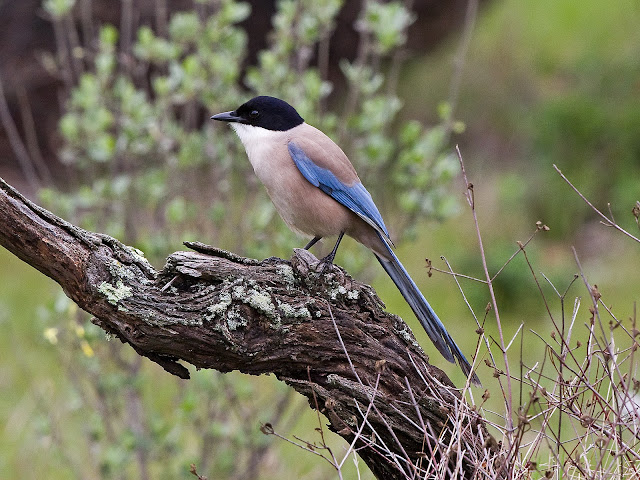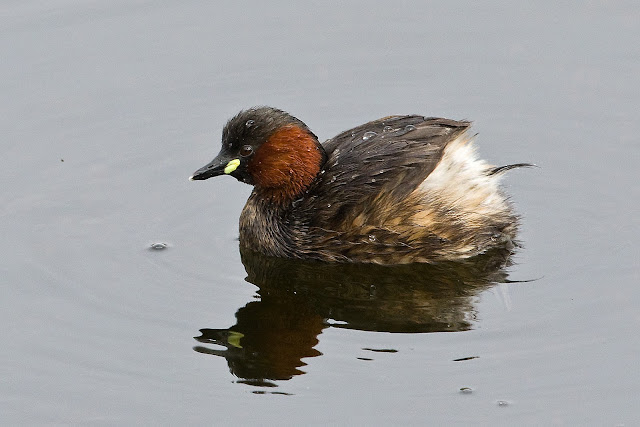We did the loop twice. This is a 60km round trip from El Rocio to the start of the loop then about 50 Km on pot-holed and dirt track roads. Hard work but even in heavy rain the roads were all passable and there were a lot of good birds to see.
Black Kites, Buzzards, Black Redstarts, and Iberian Grey Shrikes on the way in from El Rocio. We also saw Woodchat Shrikes but couldn't get the picture.
 |
| Black Kite |
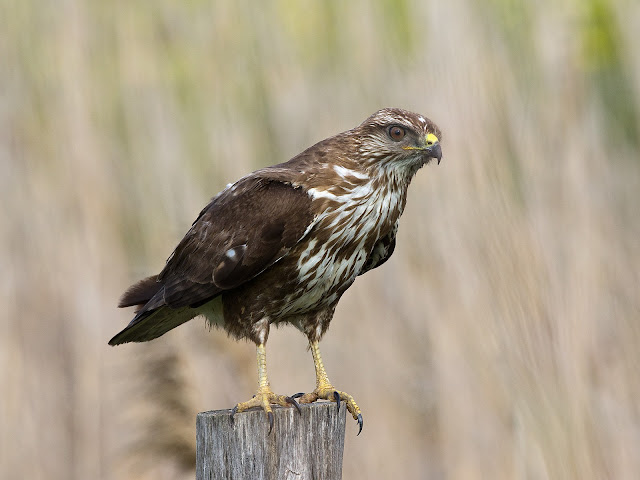 |
| Buzzard |
 |
| Black Redstart |
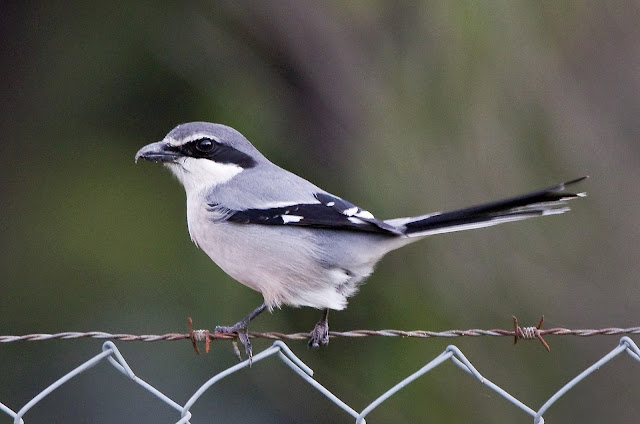 |
| Iberian Grey Shrike |
We did the eastern route via the Bombas de Casa pumping station the first day, returning by the same route. The second day we took the western route going via the Hato Raton Farm and then coming back on the eastern route.
My advice would be to give the western route a miss. It was mostly industrial scale farming and all the ditches had recently been dredged with the soil dumped back on the canal side vegetation and reeds. There was very little to see other than one stranded motorist that we had to stop to help. It's a bit like being in the outback.
Good views of White Storks, Spoonbills, Black Stork, and Black-tailed Godwits alongside the Arroyo de la Ciguens.
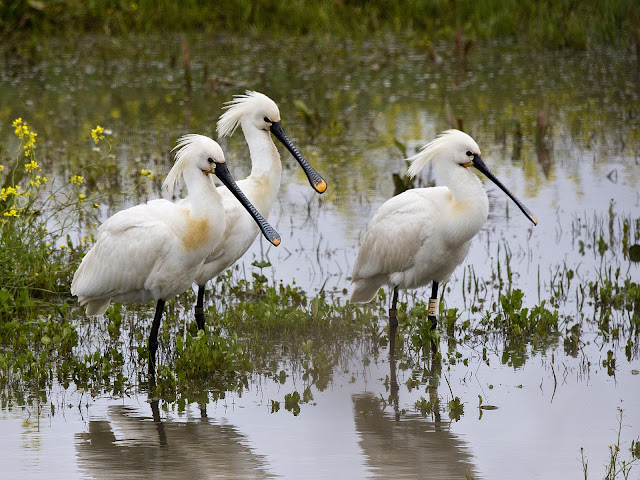 |
| Spoonbills |
 |
| Black Stork |
We had two or three encounters with a Black-winged Kite and on one of the occasions with a pair of them, at the start of the eastern loop. A life tick for me but he really didn't want his picture taken. I also managed to overexpose the only clear shots that I had. The best of the rest is shown below.
 |
| Black-winged Kite |
Much confusion was then caused by going back to the location on the last day of the holiday and photographing the bird below, hunting on the same strip of land. Sad to say, it wasn't until I got home that I noticed the yellow eye. The old problem, too busy trying to get the photograph and not seeing the bird that is in front of me. In my defense, it does look a bit like a Black-winged Kite and it was in the right location.
 |
| Hen Harrier |
 |
| Hen Harrier |
 |
| Buzzard |
 |
| Glossy Ibis |
 |
| Corn Bunting |
 |
| Common Crane |
 |
| Flamingos in the rain |
 |
| Flamingo at the Jose Valverde Visitors Centre |
 |
| Green Sandpiper |
 |
| Griffon Vulture |
 |
| Squacco Heron |
 |
| Hoopoe |
 |
| Hoopoe |
There are a group of derelict holiday homes about 5km from the Visitors Centre. They are marked as Choza de Huerta Tejada on the map. It is worth stopping here to look for the colony of Lesser Kestrels based around the buildings. Although you will need to brush up on your identification skills as there are also a couple of "common" Kestrels in the same area.
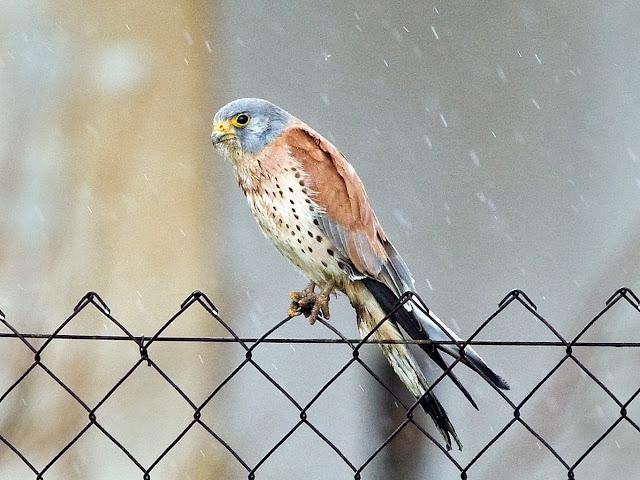 |
| Lesser Kestrel |
 |
| Lesser Kestrel |
 |
| Lesser Kestrel |
 |
| Lesser Kestrel |
I also had a Subalpine Warbler on the fence in front of these buildings but the photograph is not worth showing.
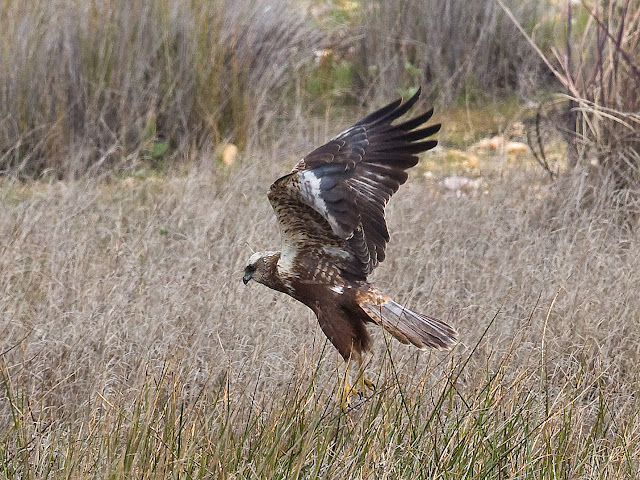 |
| Marsh Harrier |
 |
| Purple Swamphen |
We also found a couple of small flocks of Spanish Sparrows on the way back. They seemed to be mostly females but there was one good looking male present although he was difficult to photograph.
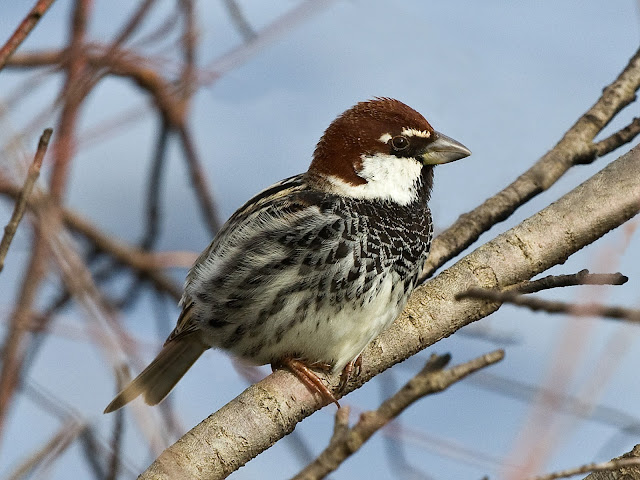 |
| Spanish Sparrow |
It was a couple of long days being shaken about in the car but you felt that there was still a lot more to see. The Black-winged Kite deserved having a day dedicated to it in order to get that definitive picture but time is all too short.
















